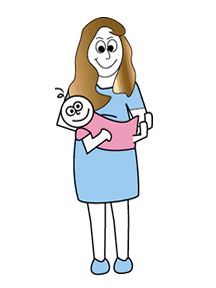July 2023, Designed, produced, and maintained by Bhavani Shankar Kodali MD
Website reviewed in British Journal of Anesthesia (https://www.sciencedirect.com/science/article/pii/S0007091217375451)
What you are going to witness here is a website containing several animations. This may be the first of its kind. It is my firm belief that animations facilitate easy understanding. Basic concepts of pain during childbirth and pain relief are discussed with picture animations to facilitate easy understanding. The website is divided into several sections, as shown in the ‘Contents’. You can browse through from one section to the subsequent section methodically. Otherwise, you can select the section you desire to study. This website aims to provide information about childbirth pain relief methods that use medications such as the popularly known ‘labor epidural anesthesia. However, some methods do not use medications and facilitate natural childbirth.
A ‘section’ that explains these methods is included. There is also a section on cesarean delivery. Changes will be made to the website periodically to enhance presentation and update material.
Introduction:
The first pain-free childbirth using regional anesthesia was reported in July 1900. Since then, in the last century, a firm and dedicated commitment of anesthesiologists and professional societies such as the ‘Society of Obstetric Anesthesia and Perinatology (SOAP) have led to tremendous advances in regional anesthesia to provide safe, pain-free delivery to requesting expectant mothers. New regional anesthesia techniques, a variety of newer medications and methods of administration, and dedicated obstetric anesthesia and nursing care teams have made pain-free childbirth with regional anesthesia a safe option for expectant mothers in this century. Approximately 2 million mothers use epidural analgesia each year to deliver their babies. Over 70% of pregnant women at our Institute opt for epidural analgesia for childbirth. The national rate of epidural analgesia varies between 51 to 70%.
Fortunately, pain relief during labor and delivery is an accepted part of the child-birthing process in this era. The American College of Obstetric and Gynecology, in their committee opinion # 118, summarizes pain relief during childbirth as follows: “Labor results in severe pain for many women. There is no other circumstance where it is considered acceptable for a person to experience severe pain and amenable to safe intervention while under a physician’s care. A maternal request is a sufficient justification for pain relief during labor.” The American College of Obstetrics and Gynecology also believes that “of the various pharmacological methods used for pain relief during labor and delivery, the lumbar epidural block is the most effective and least depressant, allowing for an alert, participating mother.”
You are expected to consult your care providers and get your questions adequately answered before making final planning for your childbirth.
Definitions:
Analgesia is full or partial relief of painful sensations.
Anesthesia is usually considered a more intense blockage of all sensations, including muscle movement.
News Flash: No evidence that labor epidural cause Autism: Read the FAQ section refuting the conclusions of the JAMA article.
Bhavani Shankar Kodali MD
Professor, University of Maryland
University of Maryland Medical Center
Baltimore, MD, USA
bkodali@som.umaryland.edu

